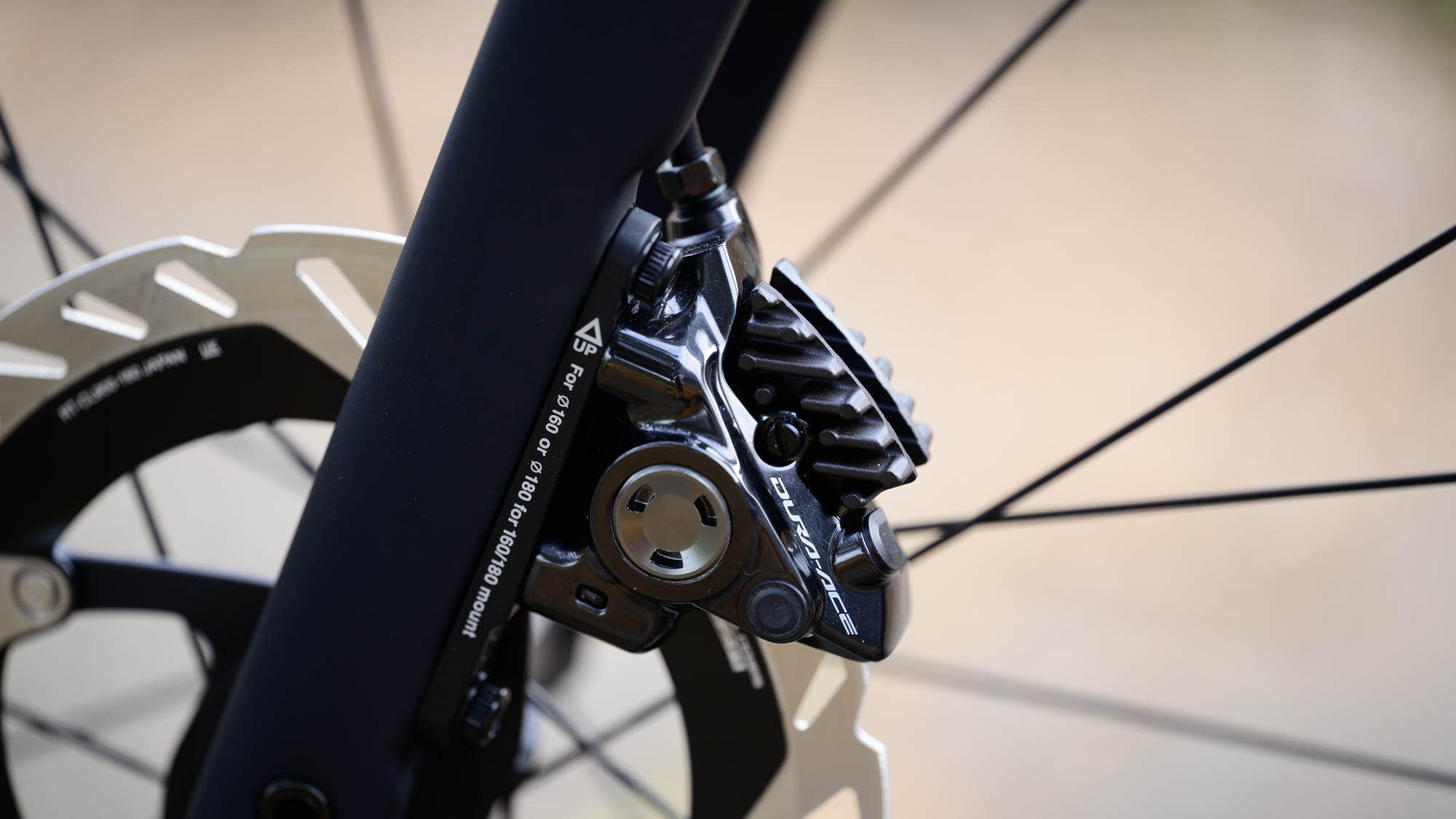
Price: £3,631.87 / $4,398.86
Speeds: 2x12
Chainrings: 54/40T, 50/34T, 52/36T
Cassettes: 11-30T, 11-34T
Brakes: Disc only 140mm or 160mm rotor options
Function: Semi-wireless, electronic only
Weight: 2471g weighed with a 50/34 crank, 11-34T cassette, and dual 160mm rotors
As I write this, Shimano Dura-Ace is sitting in the number one place in our best road bike groupsets buyers guide. We have it listed as the best road bike groupset currently available in the short to medium term at least, that is unlikely to drastically change. There's an argument that SRAM RED AXS could occupy the top spot but it's been years since anyone else was a contender. Shimano is also far more common than SRAM even as the American brand has started to chip away at Shimano market dominance over the last few years.
Despite that market dominance, this review is being written years after Dura-Ace Di2 R9200 first came to market. Although I'm happy for the opportunity to revisit something with the benefit of time on my side, it does also point to struggles that Shimano has seen. First it was impossible to get your hands on Shimano products, then the brand went through a huge recall, and finally the latest GRX failed to make the splash the brand was hoping for.
With all that as the backdrop, I now get to highlight an exceptional product. Whatever headlines might stick in your mind, make no mistake, Dura-Ace Di2 R9200 is the stuff of dreams. If you care about road bikes, this is a groupset you absolutely lust over. The only questions that remain are details and what it's like in day-to-day use. If you are trying to decide which direction to go with an upcoming dream build, keep reading to see my thoughts on choosing Dura-Ace having used it a lot.
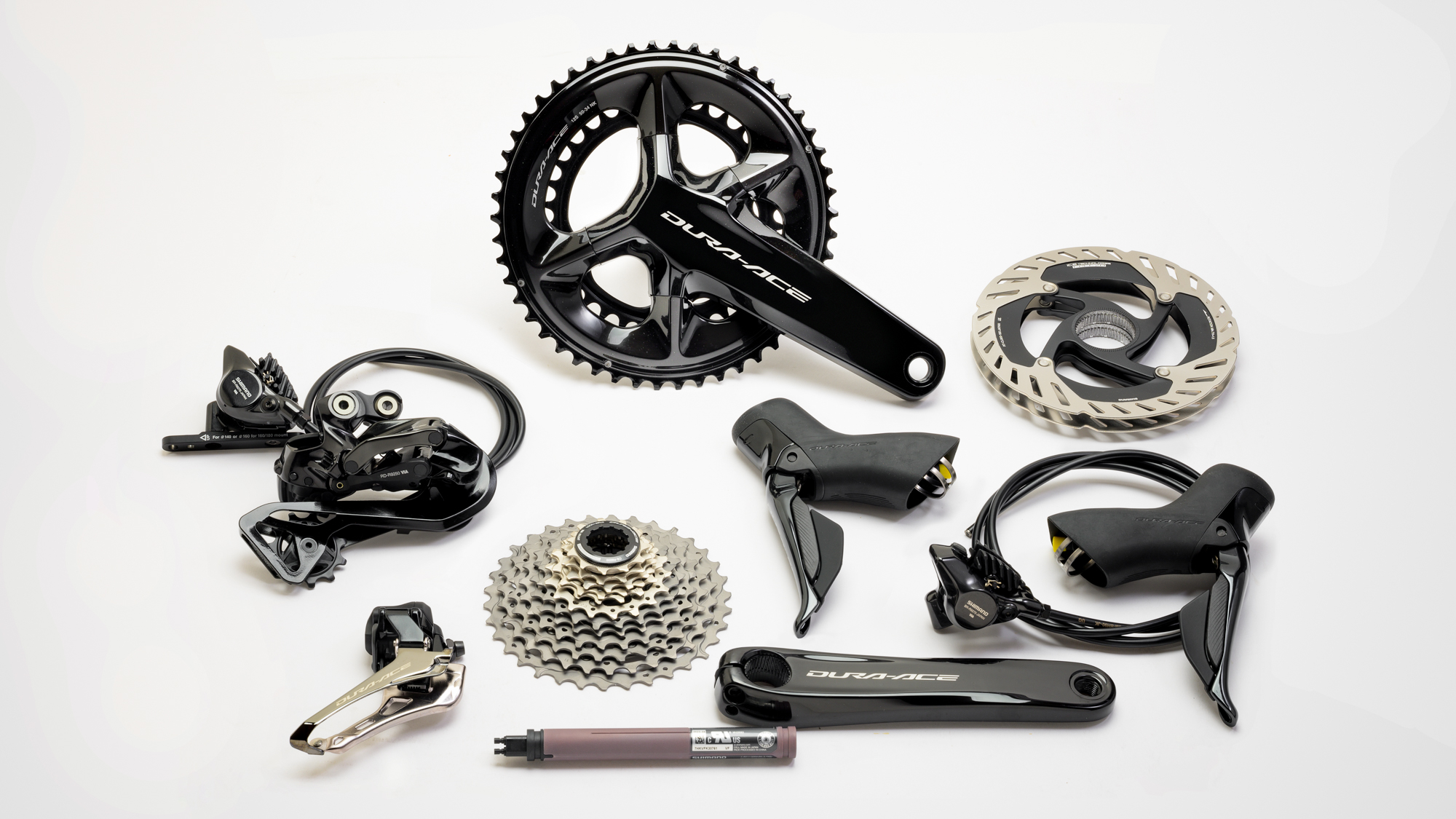
Design and aesthetics
Looking back at the previous generation of Dura-Ace, it feels like another timeline at this point. When Dura-Ace Di2 R9200 hit the market it did so with a big splash. You can still buy rim brake controls but the brakes themselves haven’t been updated and Di2, synonymous with electronic shifting, is your only option now. A big part of that is that Shimano has followed in the footsteps of FSA and Dura-Ace is now a semi wireless system.
Semi wireless means that the controls use a CR1632 coin-style battery (lasting up to two years) to connect wirelessly to the rest of the system. Although, unlike SRAM, there are still wires everything else is less complicated. There are no more junction boxes or wireless modules.
Instead, the system starts with the battery and a single wire connects to the front derailleur. The front derailleur is now 33% smaller, for better aerodynamics and bigger tire clearances, while also being able to accommodate up to a 55-tooth chainring. Although the front derailleur does not act like a master, there’s no official option to run a 1x system.
A second wire is then connected to the rear derailleur. Despite the lack of 1x, the rear is still the master in the system. It’s here that you find the wireless connection to both the controls and any external device. You’ll also find a magnetic charging point at the rear of the bike where you can connect the EC300 charging cable.
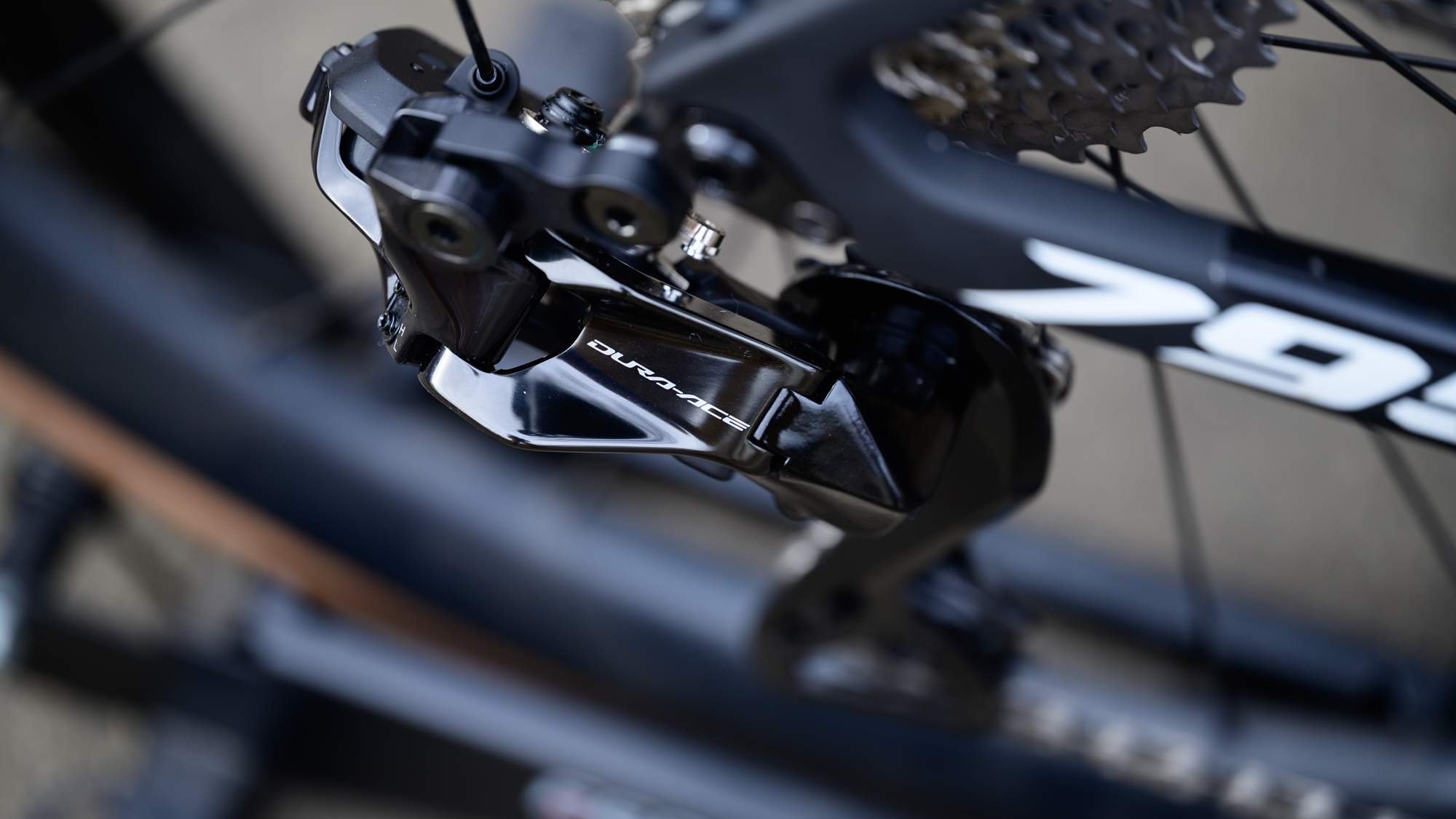
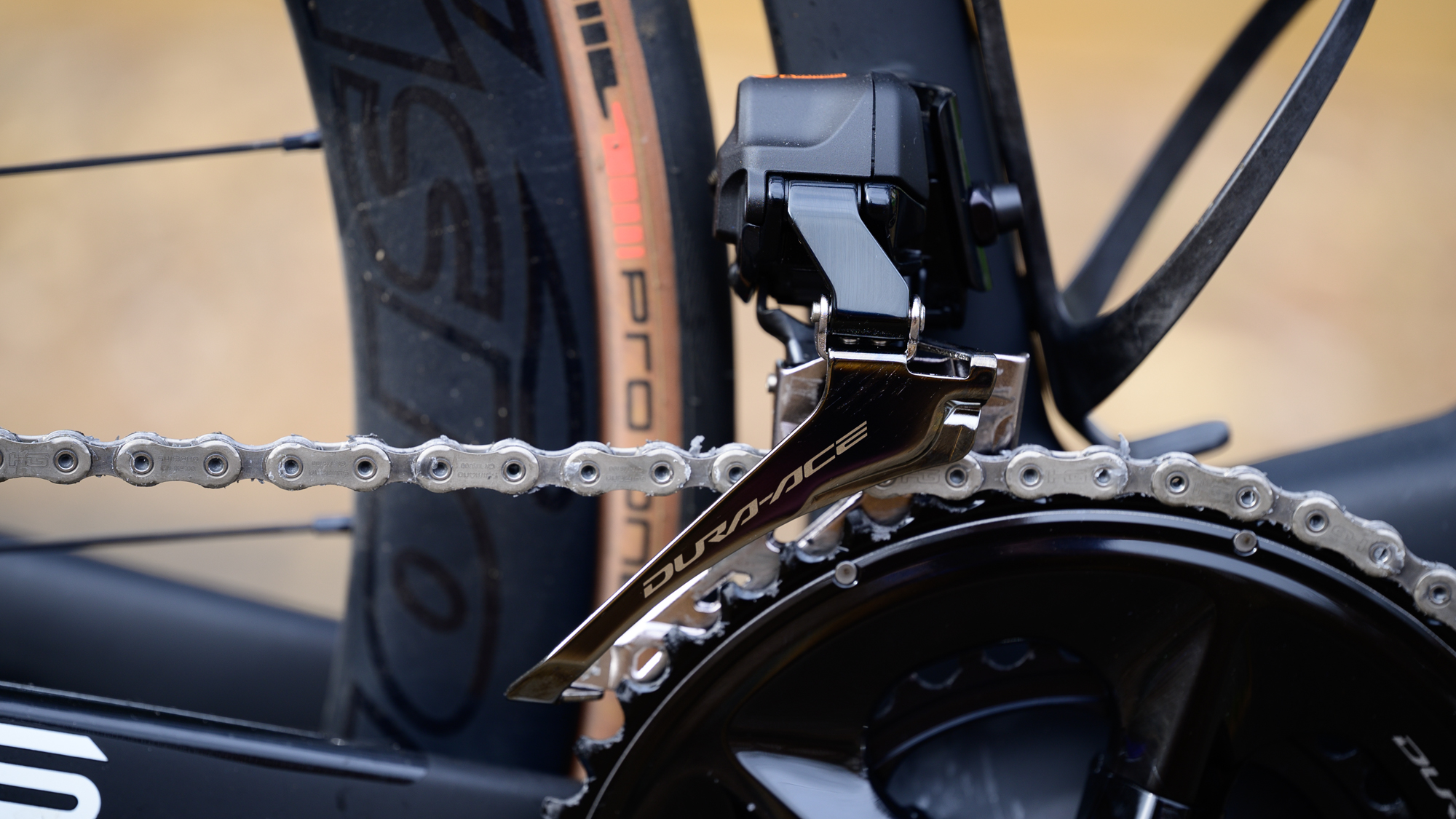
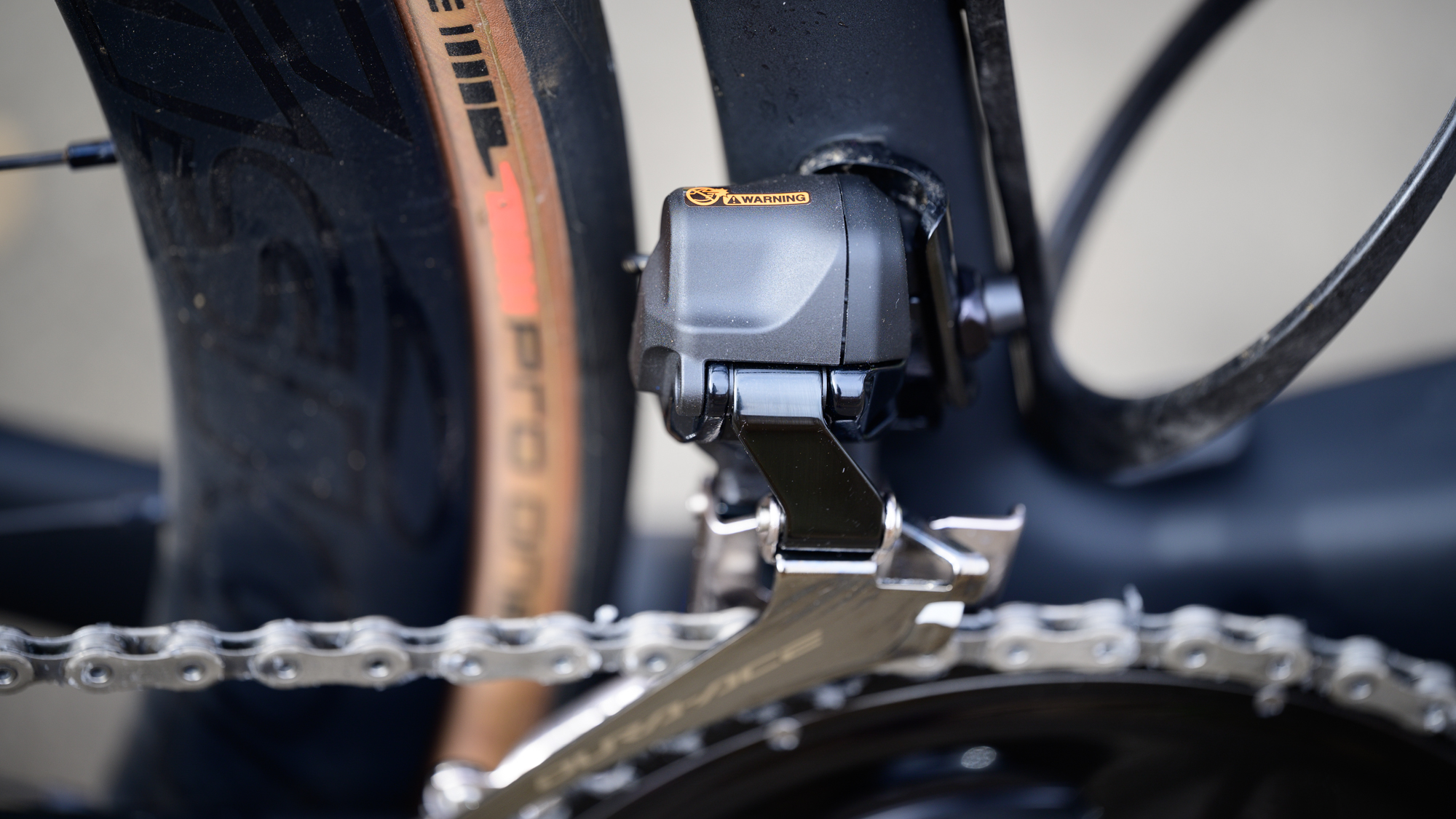
Matching the medium cage rear mech, cassette options now include an 11-28 and an 11-34. This change also brings an updated ramp technology referred to as Hyperglide+. This is an evolution of the older Hyperglide technology and might actually be the most important part of the Shimano system. I’ll get into it more below but Shimano refers to it as “revolutionary” and states the “shifting system uses our original ramp designs and technologies to smoothly guide the chain up and down the cassette for lighter, faster shifting, even under extreme pedalling force.”
Despite that system being a big part of the character of modern Dura-Ace, it wasn’t the main course when the system launched. Instead, the meat of the Dura-Ace R9200 update at launch was the move to 12-speed shifting to match Campagnolo and SRAM. Fear not though, for those who still wake with a start thinking about the move from 10-speed to 11-speed, the freehub remains mostly unchanged. Although it’s technically a new design it only splits the larger freehub pattern into smaller blocks and remains compatible with both types. Only Shimano wheels use the new 12-speed road freehub so in most cases this won’t be something you’ll need to think much about.
Rounding out the gearing offered via cassette options you’ll also find three crank options. The brand retained the same 4-bolt 110 bolt circle diameter configuration but the gearing has shifted. In a sign of the times, Shimano made the choice to phase out a 53/39T and replace it with an even larger 54/40T option as requested by professional teams. Then, for the rest of us, the options are 50/34T and 52/36T. It’s worth highlighting that this means that even at the Dura-Ace level Shimano now offers a 1:1, or 34/34, climbing ratio. In the past wide range would require stepping down to Ultegra so if you prefer the upgrade to six titanium (or five in the smaller cassette) sprockets you can have your cake and eat it too. Crank arm lengths have also shifted smaller and now include seven options ranging from 160mm to 177.5mm all with a 148 mm Q-factor.


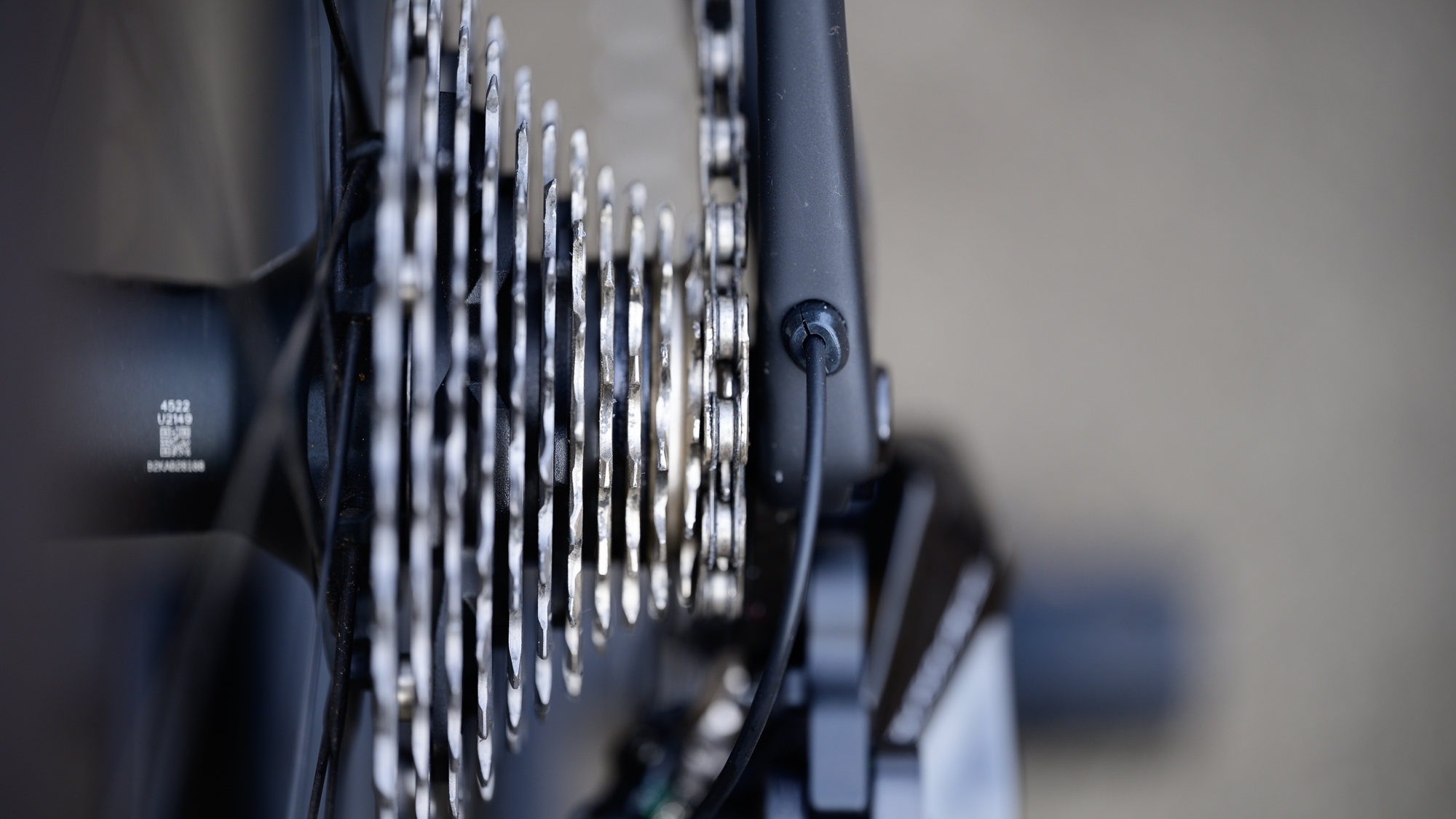
At the front of the bike, the controls are drastically different inside as they now only connect the rest of the system wirelessly. Visually though, the new ST-R9270 hydraulic levers are much closer to past versions. They are slightly taller and longer, there’s a new shroud over the brake pivot point, and the shift paddles got bigger with slightly updated textures. Overall though, there’s no mistaking these are Shimano controls. The top of the hood shape and size fits between FSA and SRAM and shifting continues to be up and down the cassette/crank via a front and rear lever on each side of the bars.
As already mentioned, twice, there’s no cable connection for the shifting but so far no one has made the jump to brake by wire. It’s not yet impossible to find a rim brake option but the vast majority of Dura-Ace Di2 R9200 systems are hydraulic and connect to an updated brake system with hydraulic hoses. Initially Shimano supply chains were in such chaos that the system launched using mountain bike rotors but since then we’ve seen the RT-CL900 come to market with heat dissipation paint and some of the styling from the previous generation ice-tech rotors.
That focus on heat dissipation is just one of the updates designed to quiet Shimano brakes after hard braking. Also on that list is Servo Wave which spaces the pads 10% farther from the rotor then speeds up the initial pull ratio. Overall it’s a strategy to keep the pads from rubbing when the rotors deform under power. It also means there’s more power with less movement which, again, points to the shifting way that riders use modern bikes and the prevalence of hoods riding over drops riding.
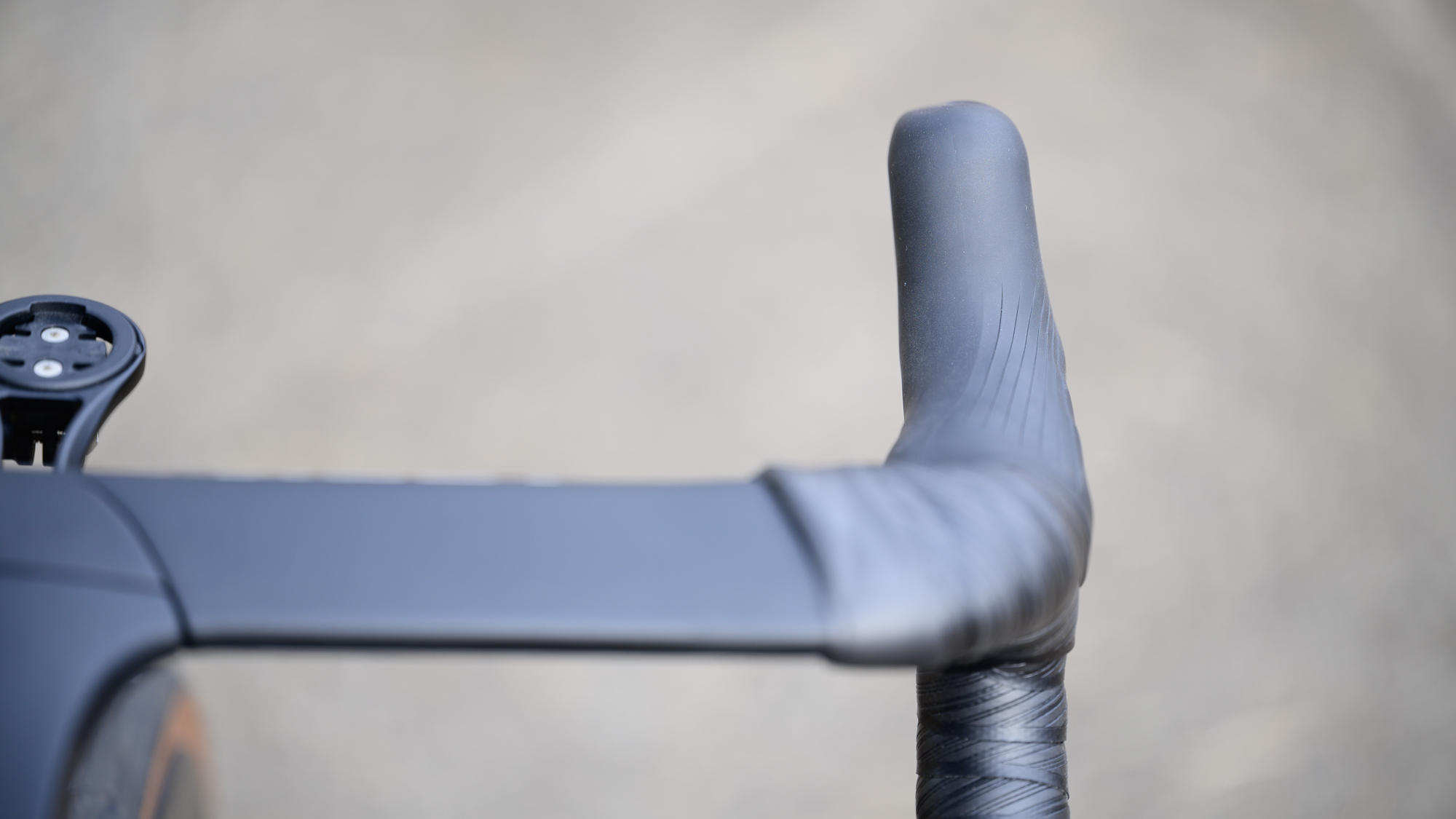
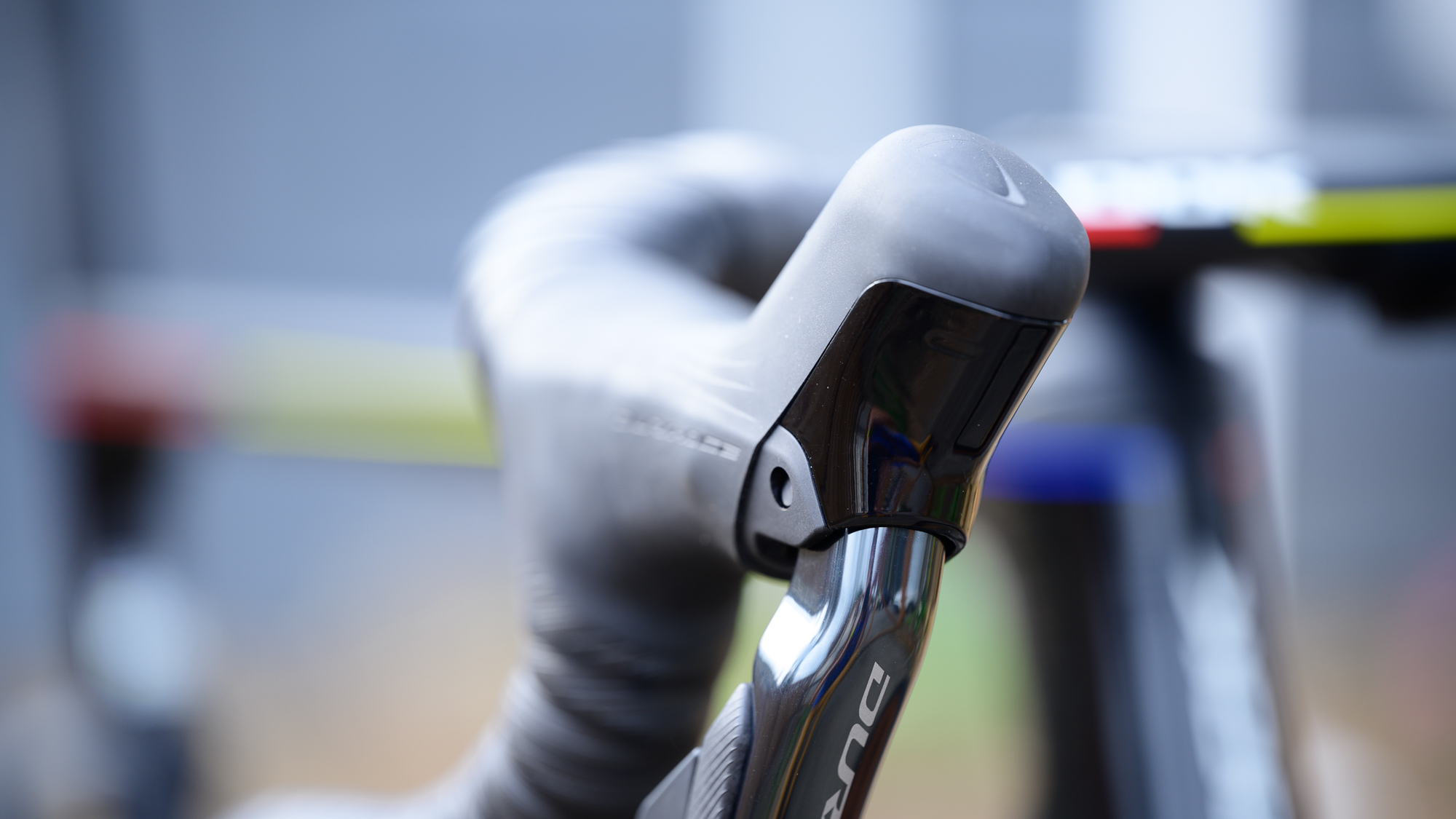
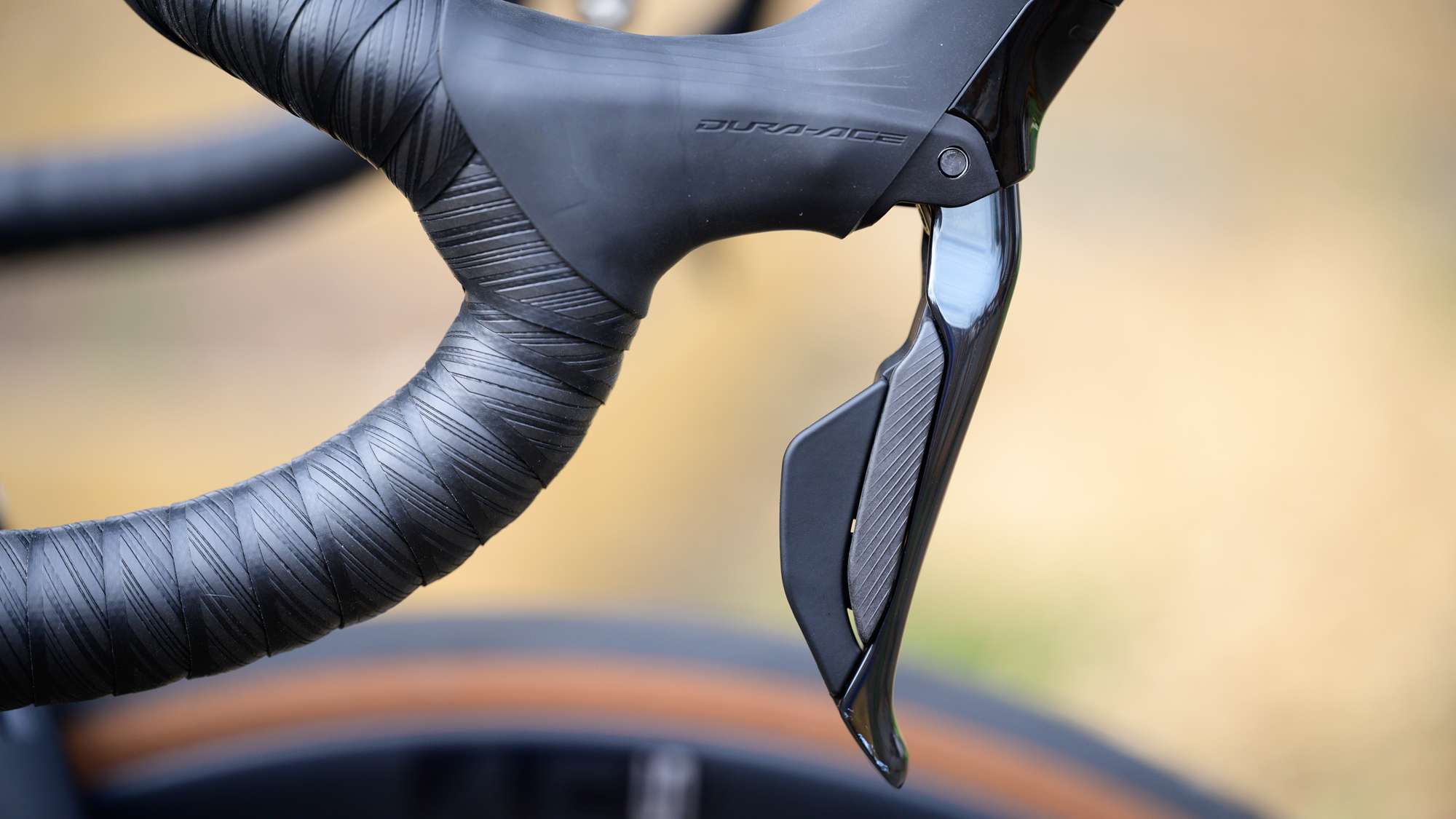
Performance
As I work through my thoughts on the experience of using Shimano Dura-Ace R9200, it makes sense to me that I start with a few of things that bug me. These are the details that are so minimal to the actual experience that I have to take note for the review. They also tend to be the things that stick out to me partially because there’s a narrative out there and I don’t always agree with it.
What I mean is that most conversations about Shimano road groupsets in general start with praising the brakes and my experience is a little different. While I find the brakes very good, I also find SRAM RED brakes at least equal. Each system has positives and negatives but if I focus on Shimano, I find that the pads make more noise at low speeds and the rotors are more prone to heat warping after hard descents. There’s a prevalence for little “ting” noises and pad drag after descents and R9200 made changes to the system specifically to address those details. Unfortunately I find the issues persist. I was also able to induce brake fade exactly one time I can remember and it was on a Dura-Ace R9200 bike. It’s entirely possible that SRAM RED also would have experienced fade but I was on Shimano. On the upside it’s nice to have mineral oil instead of DOT fluid when it’s time to bleed.
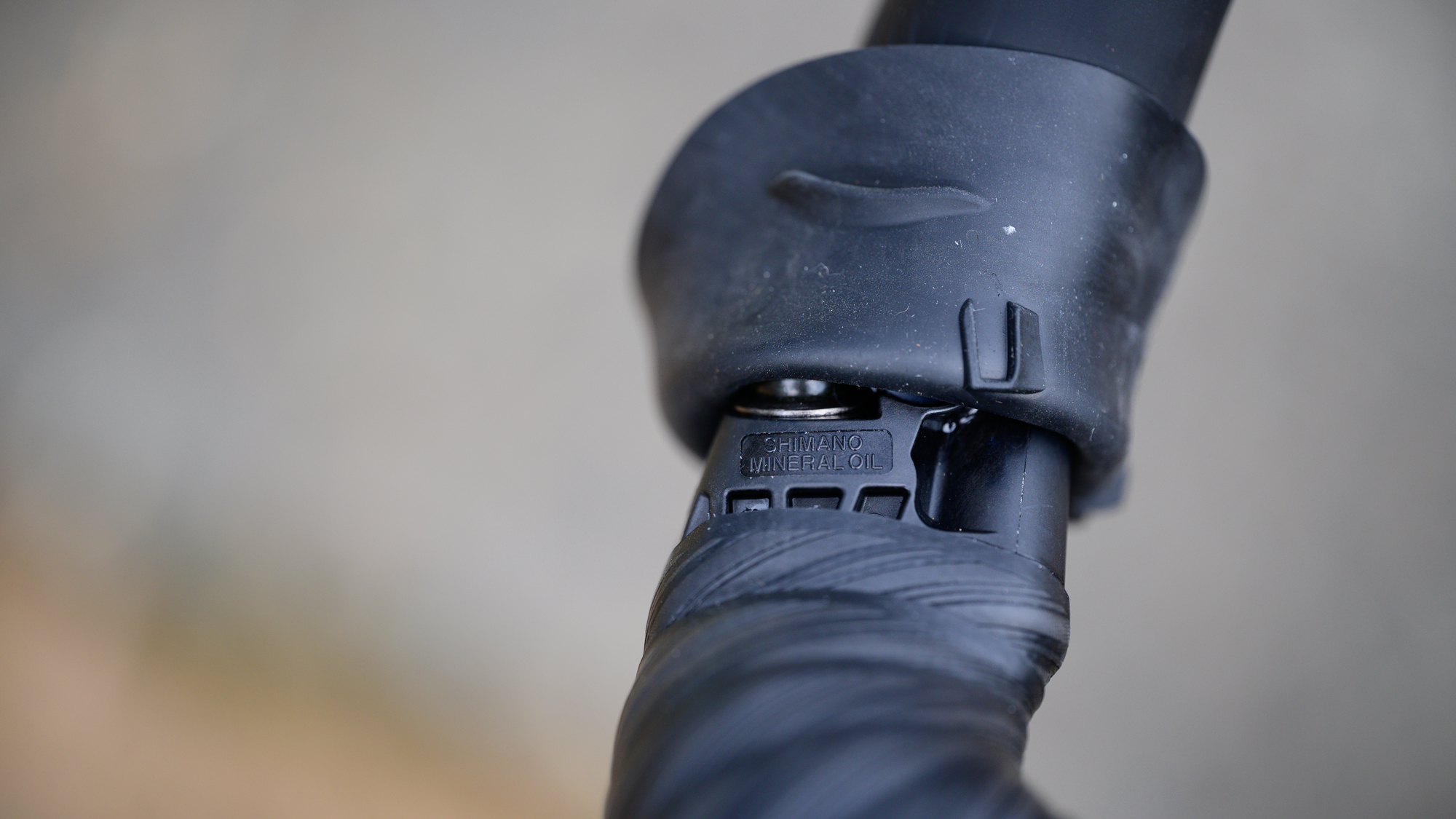
Another detail I find myself coming back to is that it's difficult to distinguish the shift buttons from each other. When riding Shimano Di2 systems I find myself spending a lot of time mentally considering which button I'm actually touching. This is in contrast to the relatively giant buttons that SRAM uses. Again there is an upside though. If I'm eating, or filming with an Insta360 X3, and suddenly find the road turning up I can shift to an easier gear with only my right hand if I'm on a Shimano bike.
The last negative detail I want to run through is the battery system. If anything this is one of the big decision points as you consider which high-end groupset you’d prefer. Shimano batteries last longer and you’ll never forget them at home. The downside is that you have to plug in the bike and you can’t have extra batteries. With SRAM, you can buy extra to bring with you, or to have at home, and it’s easy to pop off the battery for a charge whenever you think about it.
If I transition into the positives, it starts with the shape of the hoods. I don't have big hands and SRAM hood tops are huge but I've adapted over time. When I ride I am almost always on the tops but when I am really thinking about going fast I'll get my forearms parallel to the ground and hold the tops of the hoods. It's aerodynamically fastest and with SRAM it's easy to be a bit lazy with your hand position because the tops of the hoods are so large.
In contrast, Shimano manages to hit a sweet spot. There's enough to grab but you can keep your hand small and almost pointed. There's just enough texture to keep your hand in place but not so much that I want gloves on long rides. The slight inward lean only adds to that and it's especially nice for keeping your hand on the brake lever while in the aero position.
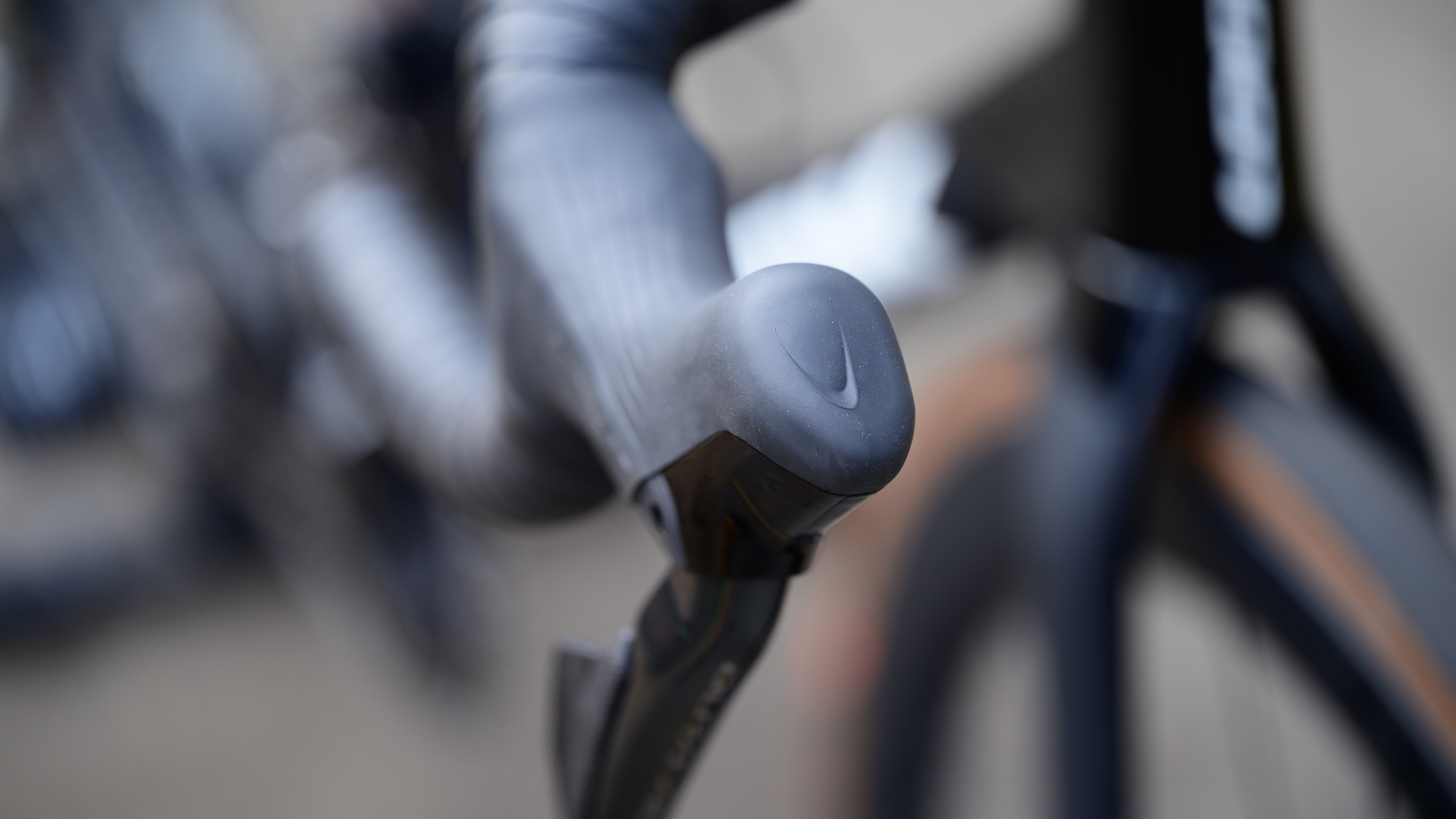
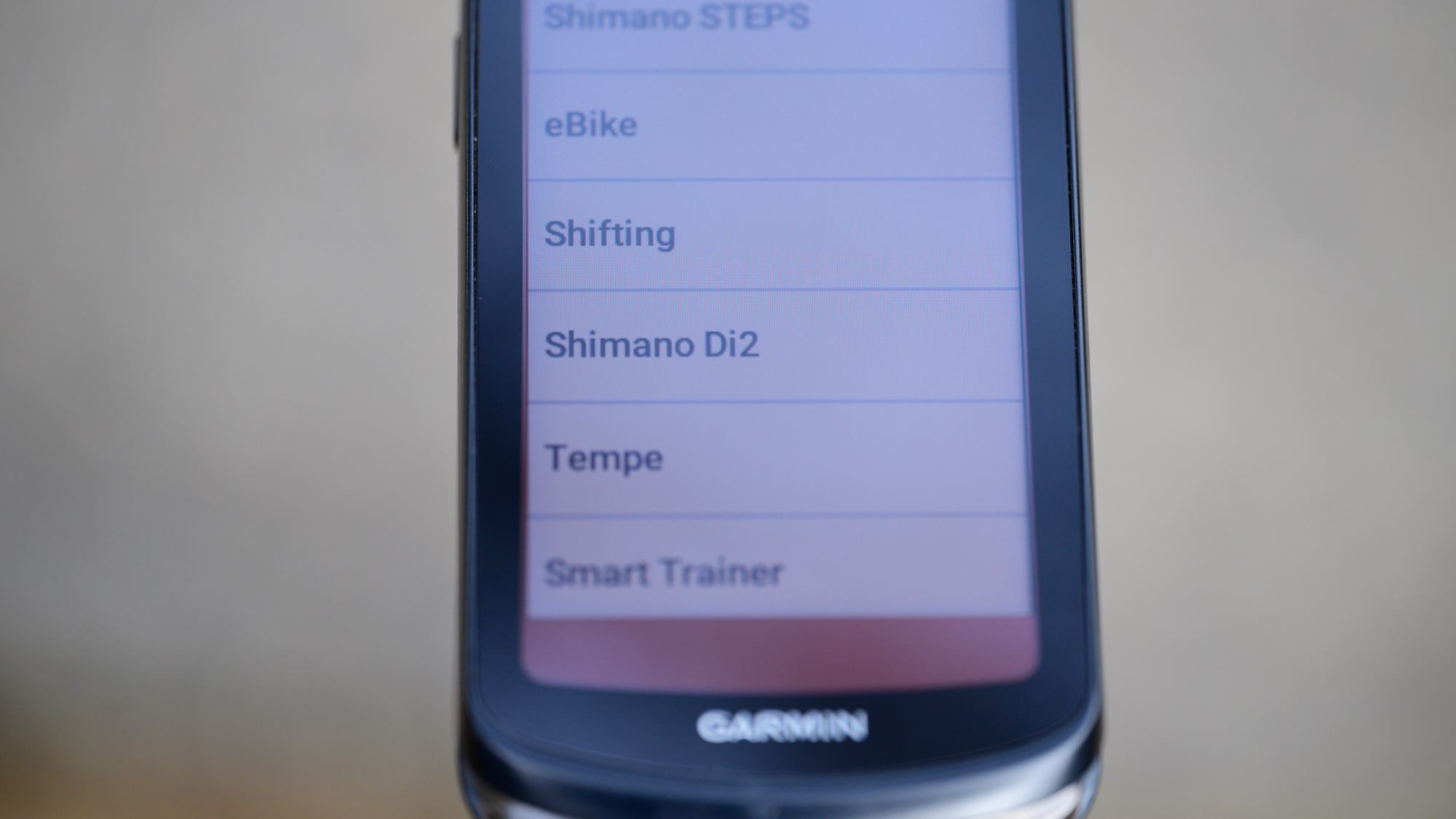
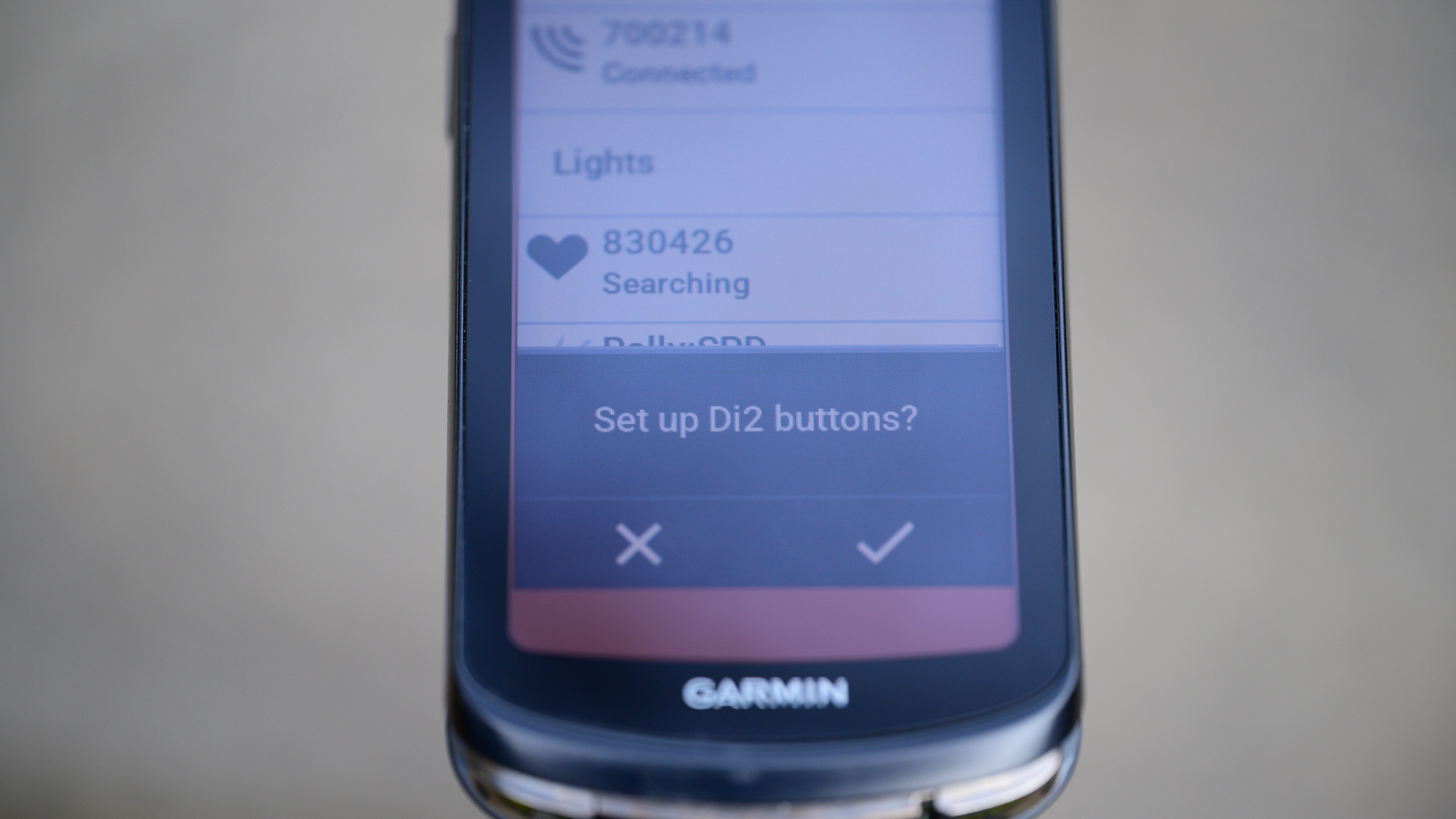
Of course there's also the buttons on the top that I use to control my Gamin 1040 Solar, those feel like magic and can be re-assigned. While I use them for control of my Garmin, and never get tired of that experience, you can also make them a built-in satellite shifter. Doing it is incredibly easy using the e-tube mobile app and that's also where you'll find battery life and firmware updates.
Overall, this is one of the things that's shifted since Dura-Ace R9200 first hit the market. These days the SRAM app caught up if not surpassed the Shimano app. At launch time though, Shimano was the first to offer a visual representation of micro-adjusting the rear derailleur. This might sound like a small thing, especially with a Dura-Ace setup, but being able to visually understand how much and which direction you are moving the derailleur makes life easier. This is especially true if you regularly change wheels as it's easier to remember what each wheelset requires for smooth shifting.
The smooth shifting though, that's the real main course when it comes to Shimano Dura-Ace Di2 R9200. In the same way that absolutely slamming into each gear is a hallmark of Campagnolo shifting, Shimano has a well deserved reputation for being so smooth you might miss that it happened. The first time you ride 12-speed Dura-Ace, even compared to SRAM RED, it's shocking how smooth and silent it is. Perhaps that’s because of the Hyperglide+ system but whatever it is, the shift quality is incredible.

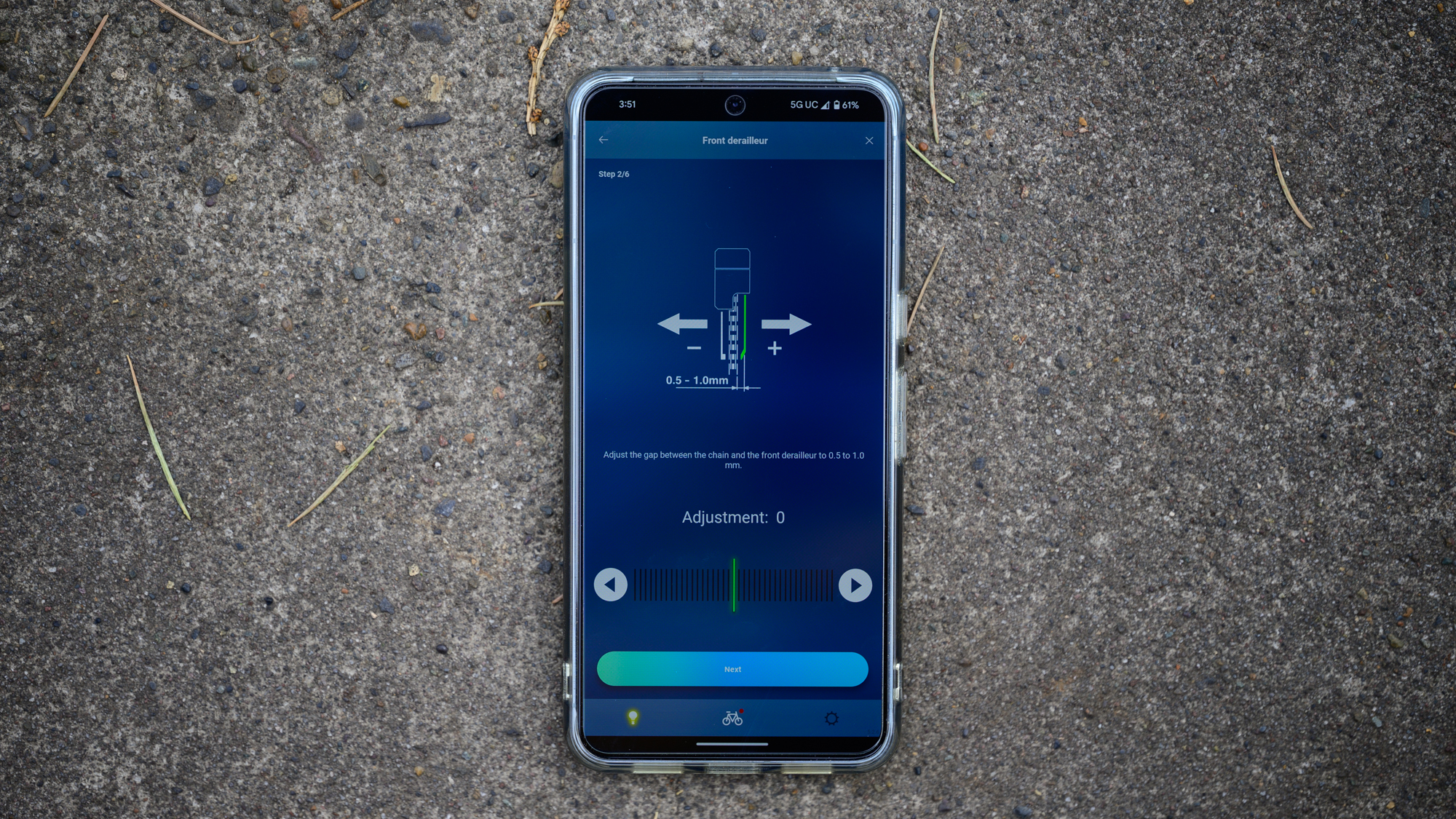


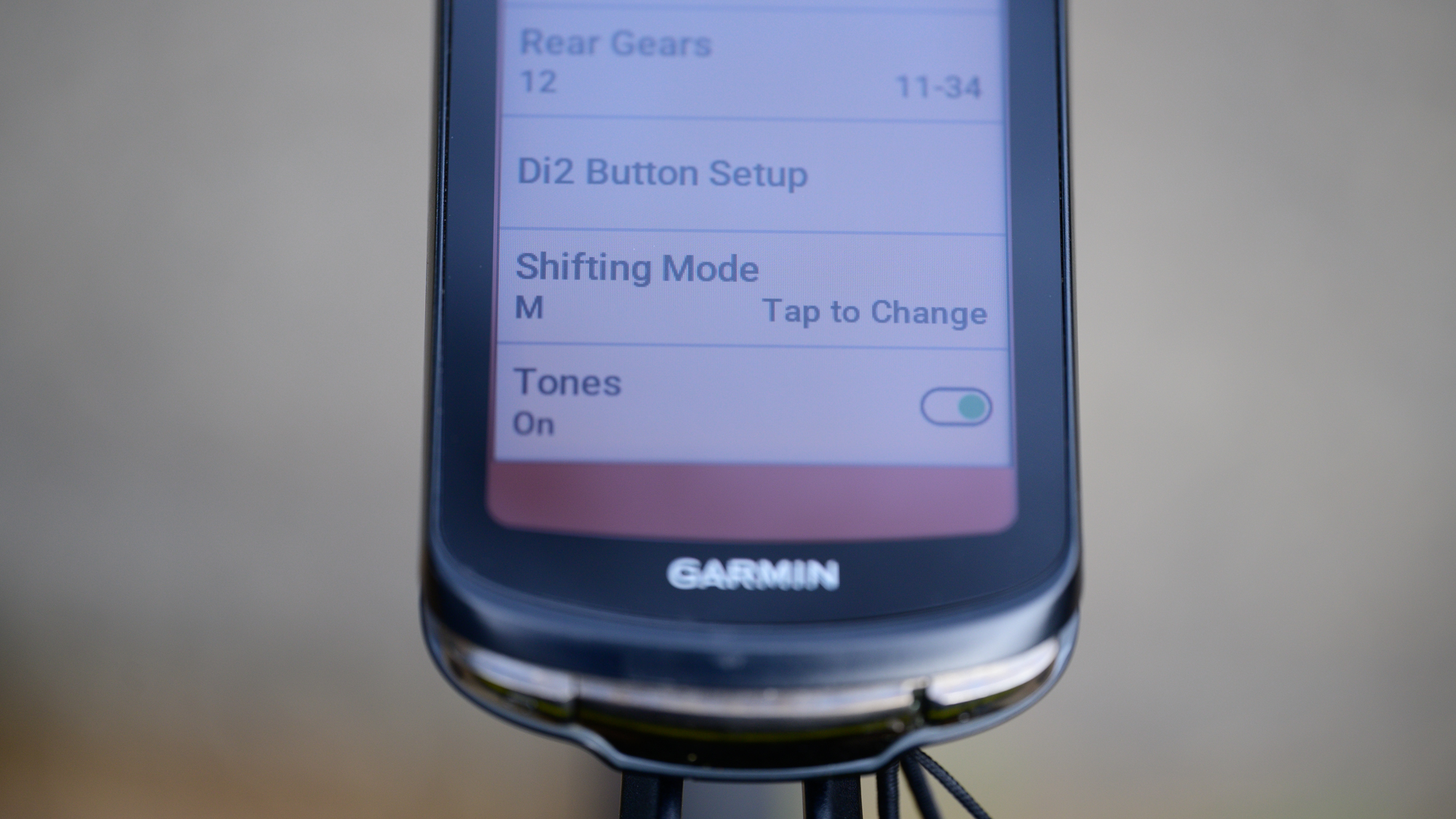
Verdict
One of the points that I mentioned in the shorter verdict is how close Dura-Ace and Ultegra are at this point in the history of Shimano groupsets. It's always been the case but with a fully electronic system no one can claim it somehow seems to shift smoother as the two are the same. It's possible, even likely, there never was much difference in the shifting but at least before you could pretend. Now there's a motor and software moving the derailleur for you and it's the same with Dura-Ace and Ultegra. So what else is different?
Weight is one difference. The Dura-Ace cassette uses more titanium and there's a quoted difference of 92 grams for the 11-34 cassettes. The chains for both systems come from the mountain bike side of the company and while there are some anecdotal reports of the Dura-Ace chain lasting longer, it's only 10 grams lighter. Otherwise there are a few grams cut from everything aside from the battery and it does add up. On a scale you'll find a 245 gram weight reduction and if that's what you are after, it's there.
For most people though, 245 g / .54 lb, probably isn't worth the price difference. It's true there is a very real performance gain possible in that much weight reduction. I also used a Ceramicspeed bottom bracket for my build since Shimano doesn't offer a T47 BB and Ceramicspeed claims better performance anyway. In both cases though, the biggest difference in my life is likely to be style.
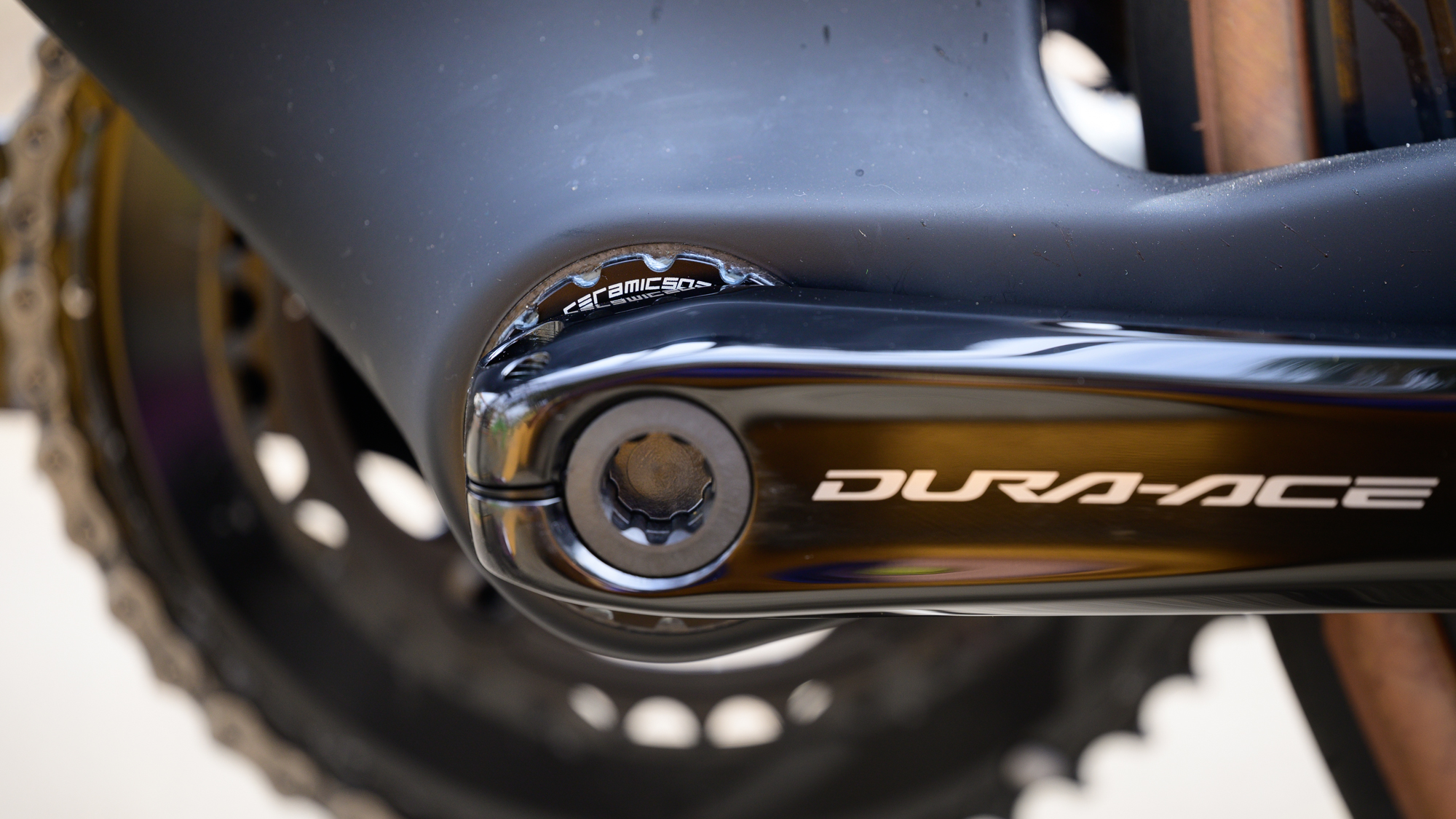
I have the system installed on my Look 795 Blade RS and that bike is an incredible performance machine that is a joy to look at. You can see it raced at the highest level and you can also buy it with the exact setup you'll see at those races. Riding a Look race bike, or whatever bike you prefer, with a Dura-Ace groupset and a Ceramicspeed bottom bracket is like owning an F1 car that you take up in the hills on the weekend. I tend to be at the pointy end of most group rides but I'm hardly a WorldTour rider, isn't it amazing that I can still ride the best of the best because it looks amazing and performs flawlessly? Riding bikes is fun, enjoy yourself with a little luxury if you'd like.
Perhaps a more relevant part of the discussion though is which top-shelf system makes sense for you. I haven't ridden the latest Super Record but Campagnolo has always viewed Super Record as a step above Dura-Ace and RED and now it's priced as such. If that appeals to you, it's certainly a dramatic statement. FSA is also an interesting option but unfortunately, as I write this, the brand still hasn't fully released the groupset I tested a year ago. Meanwhile, SRAM RED offers bigger buttons, a fully wireless design with the ability to have extra batteries on hand, and easier charging. I find the brake performance similar between SRAM and Shimano so, for me, I take that one off the table as a deciding factor.
Another consideration is that if you decide to choose Shimano Dura-Ace it means choosing the biggest of the current groupset brands. With that comes better compatibility with 3rd party brands like Garmin and if you are buying used wheels, they are more likely to have a Shimano freehub. You also get the buttons on the top of the hoods and incredibly smooth shifting. The battery is a little harder to charge but it does last longer and it's impossible to forget at home. The 11-tooth smallest cog is also worth mentioning only because it shifts the chain a little farther from the frame on most bikes.
